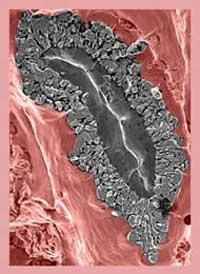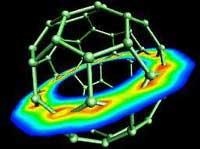Increased metal superconductors
2001/02/27 Roa Zubia, Guillermo - Elhuyar Zientzia
A metal superconductor compound was found at 39K. Magnesium diboruro (MgB2), consisting of a metal and a semiconductor, opens the doors to the new family of superconductors.
Superconductors provide fiction materials. They are able to drive electric current without generating any physical resistance. Cables of this type of material would never heat up. In addition, the commissioning of the electrical system, for example after the ignition of the light, would allow a continuous operation without spending energy or money. Even if it seems a lie, it is very common materials that have that behavior. They are very close to ideal behavior without resistance, but there are a couple of drawbacks.
All metals are superconductors but not at room temperature. This feature is very close to absolute zero. For example, niobium becomes superoale below 10K (-263ºC). Of course, having the electrical installation at that temperature is very expensive. Therefore, many physicists have sought "high temperature" supereons. Some supereoal complex oxides containing copper exceed the temperature of liquid nitrogen (-196°C). The liquid nitrogen limit is very important, as it is an economic limit outside the laboratory.
These temperatures can be achieved through such an abundant nitrogen in the air, making it cheap. However, these are ceramic materials not suitable for the manufacture of electrical components. Moreover, the transported current has great limitations when moving from one ceramic material to another. In all types of electrical installations it is preferred to lower up to 5 K.
The team led by Japanese researcher Jun Akimitsu has studied the properties of simple compounds from boron atoms and has discovered that the composition MgB2 is superconductor at 39K. Robert J. According to American expert Cava, the diboride needs "16 K more than any other simple metallic material" to achieve superconductivity.
In addition, unlike ceramic materials, this effect is produced by the mechanism of the Bardenas, Cooper and Schirieffer, related to the thermal vibration of the cores. This mechanism is close to the usual procedures in physics. This has greatly increased the hope of finding similar compounds and can be a turning point in superconductivity research.

Gai honi buruzko eduki gehiago
Elhuyarrek garatutako teknologia





